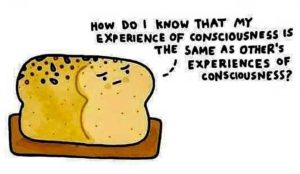Yes, the entire superstructure of the edifice of Advita Vedanta is built on three words –‘Substance, Substratum and Show (or Appearance).’ These three words are very basic to its logic. All further development of its concepts, definitions and finer and more complex definitions of the doctrine depend on what the trio of words – Substance, Substratum and Show (or Appearance) – conveys.
Therefore, it is of utmost necessity that a student of Advaita should first have a clear and unambiguous grasp of what these words (or rather their equivalents in the original Sanskrit language) mean. Even a hair width of lack of clarity in understanding these three innocently looking words can lead to disproportionately disastrous misconceptions and misinterpretations of what Advaita is all about!
Let us first look at what any simple English dictionary gives the meaning of these three words to be. Starting there will help us appreciate better what the Sanskrit equivalents connote and how an aura of technicality surrounds those words when we use them in Advaita Vedanta. Continue reading

 The Post on “
The Post on “ Narada climbs up the staircase from Name up to Spirit almost hopping and jumping spurred by his own enthusiasm and curiosity. He asks his venerable teacher at each step after meditating, “What’s next?” He, however, falls absolutely silent after meditation at the level of Spirit, the 15th itself. He has another flight of steps to take to reach the Ultimate, the Absolute!
Narada climbs up the staircase from Name up to Spirit almost hopping and jumping spurred by his own enthusiasm and curiosity. He asks his venerable teacher at each step after meditating, “What’s next?” He, however, falls absolutely silent after meditation at the level of Spirit, the 15th itself. He has another flight of steps to take to reach the Ultimate, the Absolute! Shankara opens his commentary on the 6th chapter of chAndogya with a very brief intro. bringing out the context of Svetaketu’s story and its relationship (sambandha) to the rest of the Upanishad. He says that the 6th chapter explains two important points, which are:
Shankara opens his commentary on the 6th chapter of chAndogya with a very brief intro. bringing out the context of Svetaketu’s story and its relationship (sambandha) to the rest of the Upanishad. He says that the 6th chapter explains two important points, which are: Quoting from the talk of an Advaita teacher on the message of the aitareya Upanishad:
Quoting from the talk of an Advaita teacher on the message of the aitareya Upanishad: